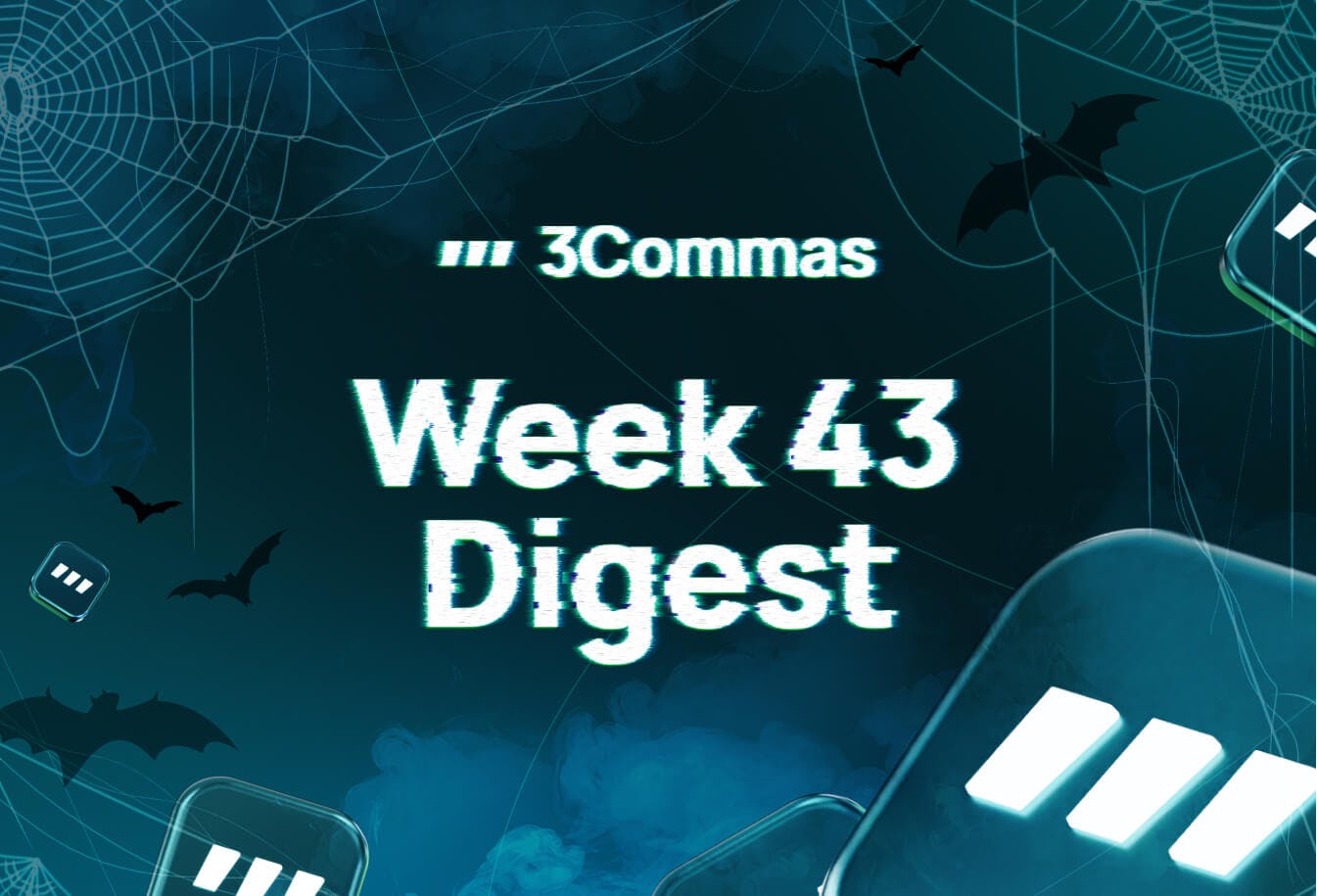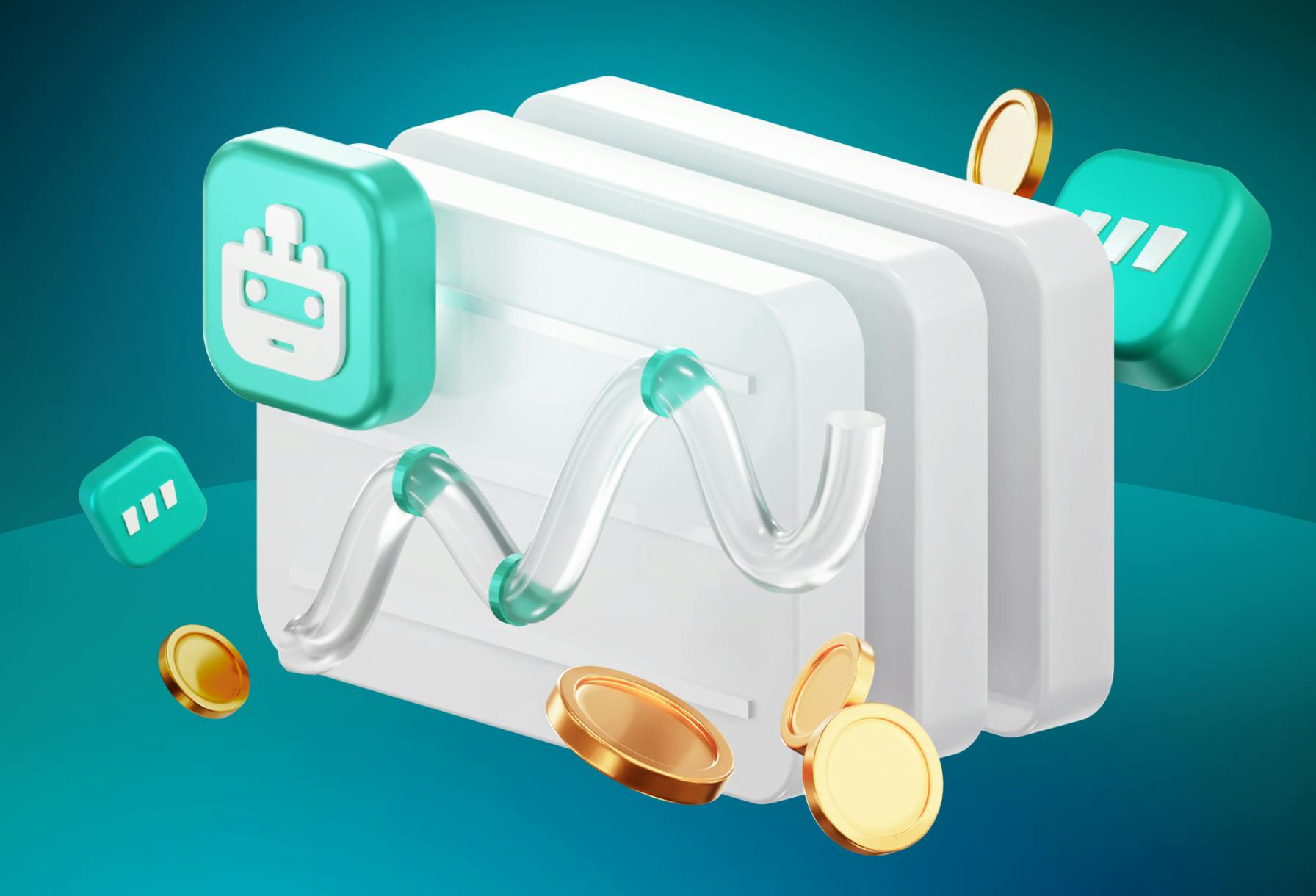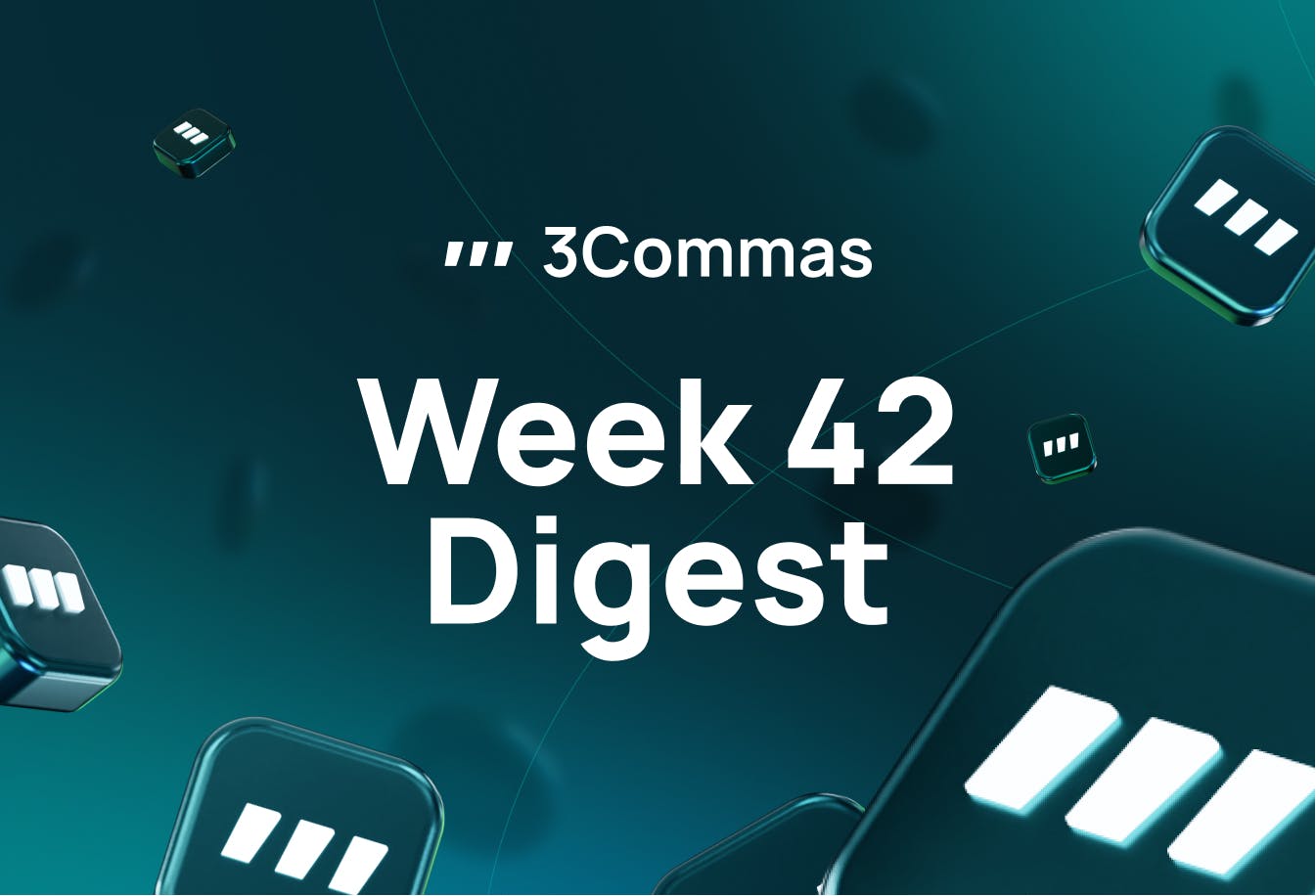
- All
- Tools
- Analytics
- Technical Analysis
- Trading
- Blockchain
- DeFi
- Guides
- Company News
- Educational
- Opinion
- Price Predictions
- Market News
- News
- Trading cases
- Practical guides
- Exchanges
- Trading signals
- Cryptocurrency
- Crypto bots
- Other
Become a crypto master
Learn everything about crypto,
trading and bots

Mina Protocol: the potential of a new mini-blockchain
Start Trading on 3Commas Today
Get full access to all 3Commas trading tools with free trial period

What is Mina Protocol?
In 2023, Mina (MINA) continues to stand out in the crowded blockchain landscape by employing the well-established Proof of Stake (PoS) consensus mechanism, but with a groundbreaking twist. It keeps its entire blockchain data and transaction records in a succinct, compressed form that never exceeds 22 KB. This is a stark contrast to industry giants like Bitcoin, whose blockchain size has surpassed 350 GB, and Ethereum, which demands over 827 GB of disk space. What sets Mina apart is that its blockchain size remains static at 22 KB, regardless of the number of transactions made or the time that elapses. This innovative feature positions Mina as one of the most lightweight and efficient blockchain networks to date. The compact size allows nodes within the Mina network to synchronize swiftly, as they only have to process and verify a minuscule amount of data. This makes the network exceptionally agile and accessible, further enhancing its utility and adoption in the evolving crypto ecosystem of 2023.
Mina uses a modified mechanism based on SNARK technology. SNARK is what compresses the cryptographic proof to the minimum values, which leads to blockchain size minimization.
How does this work? A node on the Mina blockchain generating a new block also generates a SNARK proof or certificate, which records the proof that the block is valid. This allows all nodes on the network to store only this lightweight proof rather than the entire chain of transactions. The blockchain, therefore, can scale infinitely without worrying about its size.
The Zero-knowledge-proof technology at the heart of the Mina architecture negates the vast majority of problems with today’s blockchains, such as high transaction fees, slow network operation, low privacy, and more.
We recommend visiting: https://minaprotocol.com/
Problems and solutions
Unfortunately, many traditional blockchains have a number of disadvantages. Millions of people worldwide already use traditional blockchains, such as Bitocin and Ethereum, but they continue to face regular problems.
Bitcoin is considered a first-generation blockchain, and, frankly speaking, it is outdated in comparison to newer and updated blockchain technologies. While Bitcoin’s layer one has been successful in many ways, it has proven to be unable to successfully scale. The Mina protocol solves this problem inherent in first generation blockchains. Thanks to the protocol’s immutability and blockchain size, the network’s currency becomes entirely resistant to censorship while offering faster and cheaper transactions. Minimization makes it possible for every user to check the status of the network’s ledger without the risk of censorship. In addition, Mina’s blockchain is easy to integrate with traditional financial applications.
Ethereum, which can be considered a second-generation blockchain, has raised many questions as well. Many users are concerned with the network’s high transaction fees and low scalability. And while the crypto world is waiting for Ethereum 2.0, many wonder if it will make Ethereum a perfect blockchain. Ethereum has demonstrated that smart contract technology is the future, and DeFi is a great alternative to centralized finance. However, nowadays, when conventional applications are integrated with the Ethereum blockchain, user data privacy is violated due to complete transparency of the blockchain (the so-called Ethereum Privacy Paradox) which is a great concern.
Mina Protocol easily solves this problem as zk-SNARK technology allows for complete privacy and scalability by executing all computations outside the network and then performing integrity checks on the blockchain.
Benefits of SnApps
All calculations on traditional blockchains like Ethereum happen on-chain, which inherently leads to a number of problems. Over the past year, the network has seen significant congestion, and transaction fees have grown such that the network is no longer cheap to use for decentralized applications. Developers create more and more decentralized applications, but this causes problems with user data privacy and provokes an increase in the cost of ongoing computations.
Mina Protocol offers a completely new approach and its own decentralized applications, called SnApps. They are based on SNARK technology and have two significant differences from the dApps everyone is used to. SnApps do not limit scalability as they execute all their computations outside the main chain, similar to a sidechain technology. This ensures that the network doesn’t get congested and network bandwidth is not an issue. Also, this type of application is able to verify the integrity of all data without exposing it, thus keeping data privacy intact.
More importantly, Mina Protocol makes it easy to integrate stablecoin payments into apps. This process is trivial and does not require any specific or expensive software. This is possible because Mina uses the popular JavaScript programming language to create SnApps, which means any programmer or developer with basic knowledge of the protocol can easily create decentralized applications that also integrate with centralized ones.
Unique features
It is worth mentioning that the technical innovations applied in Mina open up completely new and unique possibilities in today’s world:
- Mina Protocol will allow cross-border payments to be made without restrictions, directly from a browser window or smartphone app.
- If a user needs to obtain credit, they will be able to prove that their salary, credit history, and other factors are reliable. Additionally, users won’t have to disclose sensitive information about payment history and actual income to third parties.
- It will be possible to create anonymous voting mechanisms, where everyone will be able to verify the authenticity of results without being able to see individual votes.
- There will be no need to provide personal data to dozens or even hundreds of centralized companies (banks, mobile operators, governments, etc.).
- Small and medium-sized businesses around the world will be able to create their own crypto products, which can be seamlessly integrated into existing traditional financial solutions. At the same time, the creation, implementation, and operation processes will not be controlled by third parties and will not require high costs or specialized technical knowledge.
2023 is set to be a pivotal year for the advancement of zero knowledge, and it’s just the beginning, as we enter a new era of cultivating ZK’s potential on a broader scale. The founding vision for Mina was to build a blockchain which is universally accessible and powered by participants. With the introduction of zk-programmability, Mina is poised to achieve this goal by providing privacy, scaling, and verifiability benefits to user-aligned applications.
SNARK technology basics
It is worth taking a closer look at what zk-SNARK technology is and how it functions. This innovation helps the Mina blockchain to hard cap its size at 22 KB. This technology is quite complex and intricate.
If you’d like to get an in-depth understanding of zk-SNARKs, you can learn more about the technology here: https://docs.minaprotocol.com/
In short, Zero-Knowledge Succinct Non-Interactive Arguments of Knowledge technology, , is used to check blocks’ validity and reliability. zk-SNARK serves as a maximally compressed cryptographic proof, which can be verified in an instant. All necessary privacy and security practices are in place, since formally, there is absolutely no interaction between network nodes, except for the exchange of the proof in question. This approach helps ensure data protection and increase overall scalability.
In fact, zk-SNARK acts as a document or certificate that cannot be altered or counterfeited. It’s aimed at confirming that the calculation and validation of all transactions in the block are correct. However, it is not required to provide proof of the calculations. In other words, SNARK technology allows you to confirm that all transactions in a block are correct without having to reveal them.
The breakthrough
SNARKs generated during blockchain creation are not the complete solution. Their growing number would lead to an increasing blockchain size. Therefore, the creators of Mina came up with another idea – they proposed a concept where the SNARK itself could record more than just a confirmation of the computation and validity of network transactions.
Generating a new SNARK is a calculation in and of itself, which means it can also be noted and certified. Developers achieved the ability to create a SNARK consisting of several SNARKs itself. It turns out that it’s possible to generate one single SNARK, where the validation of all past SNARK certifications will be included. Furthermore, it is also possible to create a so-called SuperSNARK, which will be the proof of the entire blockchain history, from the very first block to the current state of the network. This ensures that the size of the blockchain remains unchanged.
Using such principles, nodes do not store the blockchain’s entire history but only proof that all previous blocks have been validated. zk-SNARKs makes all network data more secure and confidential, consistent with the primary blockchain ethos of full decentralization.
Mina network roles and transaction validation
Mina has no mining function, as the blockchain is based on a Proof-of-Stake consensus mechanism. Anyone on the network can act as a full node, which provides an increased level of decentralization. A node operator can perform one of two functions or both at the same time. In the first case, the user can become a block generator. In the second, it generates the SNARKs of transactions.
Users who act as validators are called producers or block generators. These participants decide which transactions are to be validated and included in the new block and which are not. Of course, with this system, it’s advantageous for producers to validate transactions with the highest fees as these transactions would generate larger rewards for the validator. If a block producer decides to add seven transactions, it also needs to include seven SNARKs purchased on Snarketplace (a marketplace for SNARKs), where the second kind of validators – snarkers – operate. They generate SNARKs to validate and confirm transactions. If the SNARK they generate gets added to a new block, they are rewarded with a fee that creators of the new block share with the snarkers.
Mina Protocol also utilizes delegation, well known to those who are familiar with staking. However, with Mina, the user does not need to be online and maintain their node, simply finding and choosing a reliable validator is enough.
Conclusion
In 2023, the team behind Mina continues to revolutionize the blockchain space by ingeniously combining two well-known technologies: the Proof of Stake (PoS) consensus algorithm and zk-SNARK technology. This blend has led to the creation of the world's most compact and agile blockchain, a feature that sets the stage for a new generation of decentralized applications. With advancements in both technology and strategic marketing, Mina stands a good chance of capturing the attention and loyalty of a broad user base. This not only allows Mina to potentially rival longstanding blockchains in the industry but also infuses new vitality into the blockchain ecosystem as a whole.
In an increasingly competitive market, Mina's innovation presents an edge in scalability and accessibility, making it particularly appealing in diverse global settings, including regions where computational resources may be limited. Moreover, as the demand for eco-friendly and efficient blockchain solutions grows in 2023, Mina's minimal carbon footprint could become a significant factor in its adoption and growth.

A proven leader, successful at establishing operational excellence and building high-performance teams with a sharp focus on value creation and customer success.






